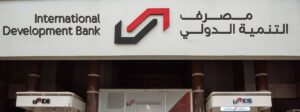- A survey by Stanbic Bank of Kenya revealed that Kenyan firms continued to report a drop in output levels at the end of the second quarter of 2022
- The rate of decline sped up for the third straight month and was sharp, shown by a further decrease in the seasonally adjusted Output Index to its lowest since April 2021
- The sector’s headline Purchasing Managers’ Index (PMI) fell to 46.8 from 48.2 in May, indicating a continued decline in business conditions and activities in the Kenyan economy
Kenyan firms continued to report a drop in output levels at the end of the second quarter of 2022.
A new survey by Stanbic Bank Kenya indicates that the rate of decline sped up for the third straight month and was sharp, shown by a further decrease in the seasonally adjusted Output Index to its lowest since April 2021.
Surveyed businesses said they were scaling back on activity due to falling demand, higher prices, weaker cash flow and the upcoming elections.
As such, the sector’s headline Purchasing Managers’ Index (PMI) fell to 46.8 from 48.2 in May, indicating a continued decline in business conditions and activities in the Kenyan economy.
The reading was the lowest seen since April 2021 and signalled a substantial decline in the health of the Kenyan private sector.
“Output, and consequently the headline PMI reading, fell to the lowest level since April 2021 when stringent public health restrictions were last imposed,” said Kuria Kamau, Fixed Income and Currency Strategist at Stanbic
Bank.
According to the survey, new order volumes registered in contraction territory for the third month of June, as businesses continued to report a negative impact from inflationary pressures on fuel and other commodities.
The pace at which new orders fell was marked and broadly in line with that recorded at the start of the year due to the Omicron wave of the pandemic.
Steep downturns in sales were registered in manufacturing, construction and wholesale & retail, while services bucked the wider trend and posted a slight expansion.
At the same time, export demand continued to outperform domestic sales at Kenyan companies in June, as the
latest survey data signalled a further positive contribution from new foreign business.
Where a rise was recorded, this was sometimes linked to improved marketing in other countries. That said,
the rate of export growth softened slightly from May and was below the long-run trend.
Kenya’s economy to grow by 5.5% in 2022, down from 7.5% in 2021
Backlog of work
Kenyan businesses registered an increase in their work outstanding at the midpoint of the year.
That said, the overall accumulation was only marginal. Firms that reported higher backlogs linked this to a reduction in staffing capacity and electricity shortfalls. Levels of incomplete work rose in the manufacturing, wholesale & retail and services categories, but fell in agriculture and construction.
At the same time, employment in the Kenyan private sector was little changed over June, as shown by the seasonally adjusted index posting just beneath the 50.0 neutral mark.
While a number of businesses reportedly lowered their workforce numbers due to weaker new orders, others hired additional staff to support sales and marketing.
In May, Kenyan firms reported a fractional decrease in their purchasing activity at the end of the second quarter.
Lower buying was generally linked to a reduction in demand, although several firms increased their purchases due to a rise in customer numbers.
At the sector level, lower purchases were recorded in manufacturing, construction and wholesale & retail.
Staff wages at Kenyan firms increased in June, continuing the trend seen since March.
Moreover, the latest rise was the sharpest recorded since October 2019, albeit only marginally and broadly aligned with the series average.
Employee salaries were raised in the agriculture, manufacturing, construction, wholesale & retail and services sectors.
Purchase prices
During the period, purchasing prices surged again at the midpoint of the year, with the inflation rate accelerating to the joint-quickest since the start of 2014 (level with March).
According to Stanbic Bank, nearly 36% of panellists saw their purchase costs rise over the course of the month,
with none registering a decline. Higher fuel prices, a stronger US dollar, input shortages and higher tax burdens were all cited as being behind the latest uptick.
Output charges levied by Kenyan private sector companies rose at an unprecedented rate at the end of the second quarter of the year. Panellists mainly linked the sharp increase to efforts to pass higher input costs on to their clients and avoid making losses. (armorfenceco.com)
The upturn was driven by the wholesale & retail sector which registered by far the fastest rise in selling prices in June. That said, strong rates of inflation were also recorded across the other monitored industries.











